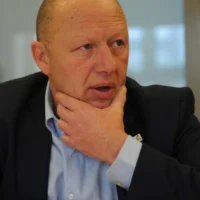Belgium (Brussels Morning Newspaper), In a world increasingly fraught with conflict and geopolitical tension, the burgeoning figures for global military expenditure paint a vivid picture of the concerns gripping nations across the globe. As of 2023, driven by crises ranging from the persistent warfare in Ukraine and the Middle East to less conspicuous but equally tense situations on other continents, nations have been channeling unprecedented sums into their military arsenals. The latest data from the Stockholm International Peace Research Institute (SIPRI) puts last year’s total military spending at a staggering €2,292 billion, marking an almost 7 percent increase over the previous year.
This hike in defense budgets is a tangible indicator of the deteriorating sense of security worldwide, prompting countries to bolster their military capabilities in response to an increasingly unpredictable global security landscape. In Europe, the conflict that Russia ignited in Ukraine in early 2022 remains a predominant catalyst. Nations such as Poland, acutely feeling the pressure of Russian aggression toward its neighbor, have responded with significant increases in their defense spending. In just one year, Poland’s military expenditure soared by 75 percent to nearly 30 billion euros, the largest spike seen in any European country, amounting to 3.8 percent of its gross national product.
Finland, another nation sharing borders with Russia, and the latest member to join NATO, has also seen a substantial uptick in its military spending. In 2023, Helsinki invested 54 percent more in arms and ammunition than the previous year, totaling €6.9 billion. Much of this increased expenditure was directed towards replacing military resources that had been provided to Ukraine in support.
The escalation of military budgets across European NATO countries over the last two years reflects a profound shift in the security landscape. The traditional NATO spending guideline of 2 percent of GDP is increasingly viewed not just as a target but as a baseline, with many countries exceeding this threshold in response to heightened risks. This recalibration of security priorities is particularly evident in the ramped-up investments in various types of military hardware, from fighter jets and anti-aircraft systems to military drones and 155mm artillery shells. The urgency of these investments has led to a scramble to establish new production lines across Europe to cater to the anticipated future demands for military equipment and munitions.
The surge in military expenditure is not just about bolstering defenses but also reflects a deeper, more pervasive fear of conflict that seems to be spreading across the continent. This fear drives not only the quantity but the quality of military preparations, as nations strive to equip themselves not just for today’s conflicts but for the uncertain challenges of tomorrow. As these nations fortify their arsenals, the landscape of international relations continues to evolve, influenced heavily by ongoing conflicts and the ominous potential for new ones.
The urgency of these military expenditures is underscored by a broader alignment within the NATO alliance, which witnessed collective defense spending by its 31 member countries (before Sweden becoming the 32nd in 2024) reaching €1,258 billion last year. This accounted for 55 percent of global defense expenditure, a significant figure that highlights NATO’s central role in international military dynamics. The United States led the pack, contributing 37 percent of the worldwide military budget, equating to a colossal 860 billion euros. This amount is roughly three times that of China, the second-largest spender at $296 billion, which marked a 6 percent increase from the previous year. Together, these two nations are responsible for half of all military expenditures globally, a stark example of their dominant positions in global defense.
Within the NATO framework, the disproportionate share of U.S. spending (68 percent of the alliance’s total) casts a long shadow, though European nations are progressively taking up more responsibility. Europeans now account for 28 percent of NATO’s budget, the highest in a decade, reflecting a continent increasingly determined to secure its defense independently. This shift is particularly poignant in light of critiques from figures such as former President Trump, who has vocally criticized European contributions to the alliance, hinting at a Europe that is preparing for a potential future with reduced American support.
Russia’s military strategy also evolved significantly in 2023. Following its full-scale invasion of Ukraine, Moscow was seen to pivot towards a war economy, with a 24 percent increase in defense spending from the first year of the conflict, totaling $109 billion. This represented about 16 percent of all Russian government expenditures, according to conservative estimates from SIPRI, which suggest that actual figures might be higher due to incomplete data. Meanwhile, Ukraine, embattled and determined, allocated 58 percent of its government budget to defense, nearly €61 billion, showing a 51 percent increase, underscoring the severe impact of ongoing hostilities on its national budget.
The escalation observed in Ukraine’s spending is mirrored across different regions, each marked by their distinct conflicts and security concerns. Following the attack by Hamas, Israel boosted its military budget by 24 percent, while the broader Middle East region saw the fastest pace of military spending growth in a decade. In the Asia-Pacific, rising geopolitical tensions are vividly reflected in the escalating defense budgets of countries like North Korea, China, South Korea, Japan, and Taiwan. The latter two, wary of growing threats, increased their military expenditure by 11 percent each, with Japan investing in advanced capabilities like American Tomahawk cruise missiles to enhance its security posture.
This significant upsurge in defense spending across various global regions isn’t merely a reaction to immediate threats but is indicative of deeper, long-term strategic calculations. Nations are not only preparing for the conflicts of today but are also looking ahead to future challenges, possibly reshaping the international security landscape. This ongoing militarization, while providing a sense of security for some, also raises questions about the trajectory of global peace and the potential for new conflicts to emerge from this arms-laden environment. As countries continue to invest heavily in military capabilities, the implications for global stability and human security remain complex and deeply intertwined with the future paths nations choose to follow on this increasingly militarized planet.
Dear reader,
Opinions expressed in the op-ed section are solely those of the individual author and do not represent the official stance of our newspaper. We believe in providing a platform for a wide range of voices and perspectives, even those that may challenge or differ from our own. As always, we remain committed to providing our readers with high-quality, fair, and balanced journalism. Thank you for your continued support.Sincerely, The Brussels Morning Team



